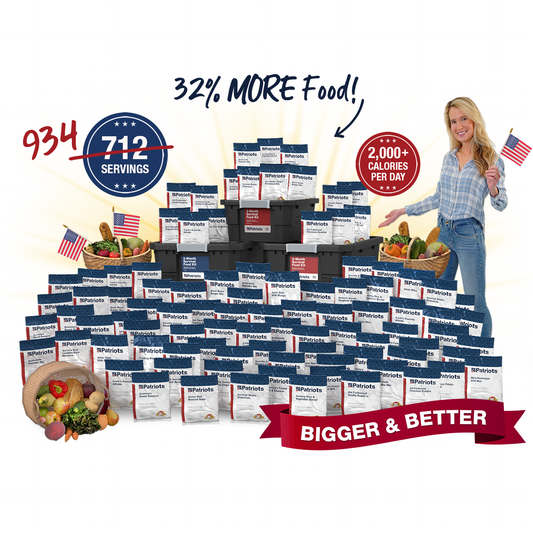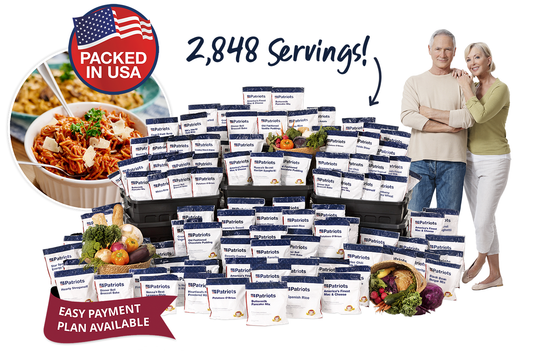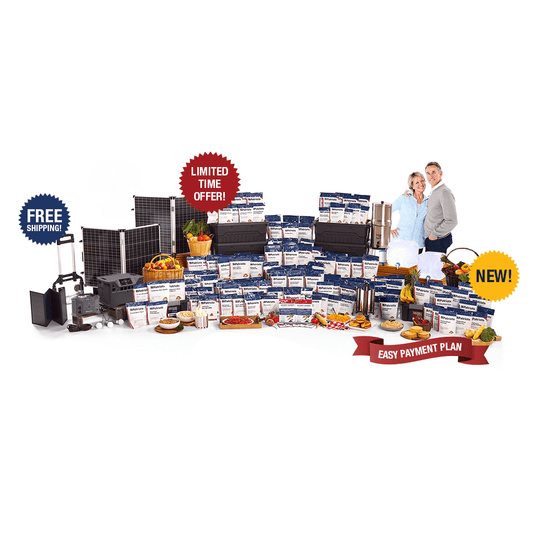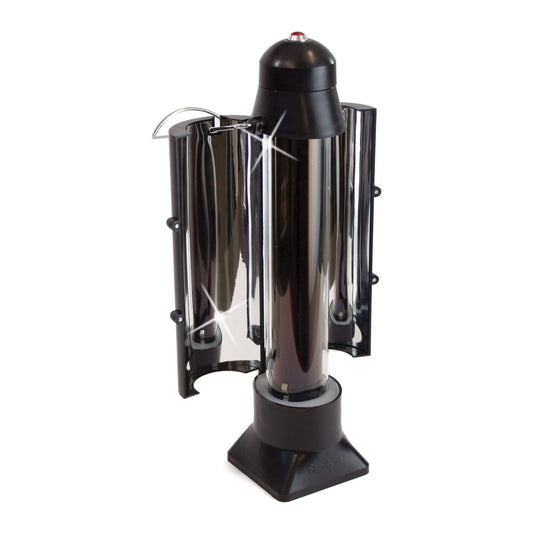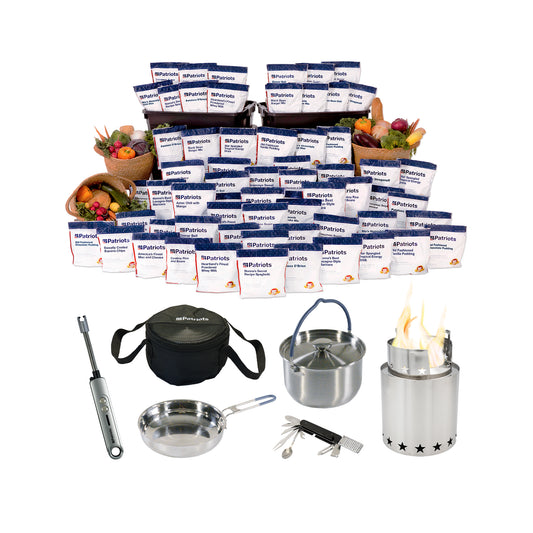
CNBC: “Inflation Won’t Go Away.” Neither Will High Food Prices

What’s the deal with all these conflicting reports? Why does one news outlet report that inflation is going down and another says it’s increasing? Somehow, both are true…
Inflation is currently down from the extremely high levels it reached during the first half of 2022. And even from the highs it reached last summer.
But the consumer price index (CPI) jumped more than expected in January. By 0.3%. This was a blow to the current administration. They’ve been touting an improvement in an area of concern to the vast majority of Americans. Especially during a presidential election year.
And even when inflation figures were dropping, prices for food and new homes were continuing to rise. That’s according to the Bureau of Labor Statistics.
‘Right Direction’ Doesn’t Pay the Bills
A recent CNBC headline said it best: “Inflation Won’t Go Away.”
Lisa Sturtevant is the chief economist at Bright MLS. They are a multiple listing service based in Maryland. She said, “Inflation is generally moving in the right direction.
“But it’s important to remember that a lower inflation rate does not mean that prices of most things are falling.
“Rather, it simply means that prices are rising more slowly. Consumers are still feeling the pinch of higher prices for the things they buy most often.”
Will Interest Rate Cuts Be Delayed?
Those who anticipated a better financial report for January are concerned the federal government will not lower interest rates as soon as expected.
The Fed will base its decision on the data that comes in. Not on the expectations of lowering inflation.
Some were expecting the first interest rate cut to come as soon as May. This recent financial report may delay that action.
Costs for some items fell in January, while others rose. For example, eggs prices were up by 3.4%, while ham prices declined by 3.1%. Used vehicles and clothes prices dropped. But electricity and airline fares rose.
Supermarket Prices Up 25% From 4 Years Ago
No matter which party is in control, they will try to make things sound better than they really are. They want to get re-elected. But you have to look at the fine print.
The reality is, prices for most food items are still heading upward. And that includes meat.
I mentioned a moment ago that the CPI rose by 0.3% in January. Food was a major contributor to that increase. It rose by 0.4%.
Now, 0.4% may not seem like a big deal. But if you look at where grocery store prices were four years ago, it gets very real. Supermarket prices are now 25% higher than they were in January of 2020. And inflation has increased by 19% over that same time period.
Frustrated Consumers Point to Food Prices
Yahoo Finance conducted a poll late last year. They asked people where they felt most impacted by inflation.
Two-thirds of those responding cited food prices as the biggest culprit. That compares to only 10% who listed gas prices and higher rents as the largest factors.
Greg Wilensky is the head of U.S. fixed income at Janus Henderson Investors, based in the U.K. He said the recent rise in inflation in the U.S. was “boosted by a notable uptick in food inflation.”
He added that, “We have not seen a food inflation print this high since the beginning of last year.”
Drought & Greed Impact Meat Costs
Why is inflation not settling down after all this time? As with most economic questions, there are no easy answers. There are too many factors involved.
But when it comes to meat, one thing stands out above the others. There are record-low numbers of cattle in the U.S. right now. Mainly due to drought. It has reduced pasture for raising cows over the past year or so.
Of course, that means there is less beef and steak available. Demand is exceeding supply – by quite a bit. And that always translates into higher prices.
Policy experts and President Joe Biden also blame corporations for unnecessarily raising prices. These companies have been accused of price gouging and “greedflation.”
5 Food Categories Hit Especially Hard
One think tank has identified five specific food categories in which prices have risen most dramatically.
The categories are beef and veal; poultry; non-frozen, non-carbonated juices and drinks; fresh fruits and vegetables; and snacks.
Notice they listed beef, veal, and poultry first. Beef and veal prices rose 7.7% in just the past month. You’ve probably noticed this at your grocery store. Avoiding the grocery store just makes things worse. Fast-food prices are climbing significantly as well.
And as always happens, folks in lower income brackets are hit hardest by rising food prices. They have to spend a greater percentage of their limited incomes just to acquire enough food to survive.
Lock in a Low Price
What’s the answer for folks whose budgets are being hit hard by stubborn inflation “that won’t go away?”
Watch carefully for deals, use coupons, and don’t purchase more food than you and your family will use.
Even if inflation cools later this year as some economists predict, food prices will probably remain high.
So, lock in good prices now by purchasing meat and other foods with a long shelf life. It will be there for you the next time inflation rears its ugly head.
Featured Products
- Regular price
- $699.95
- Regular price
-
- Sale price
- $699.95
- Unit price
- per
- Regular price
- $2,999.95
- Regular price
-
- Sale price
- $2,999.95
- Unit price
- per
- Regular price
- From $29.95
- Regular price
-
- Sale price
- From $29.95
- Unit price
- per
- Regular price
- $3,499.95
- Regular price
-
- Sale price
- $3,499.95
- Unit price
- per
- Regular price
- From $29.95
- Regular price
-
- Sale price
- From $29.95
- Unit price
- per
- Regular price
- $2,499.95
- Regular price
-
- Sale price
- $2,499.95
- Unit price
- per
- Regular price
- $499.95
- Regular price
-
- Sale price
- $499.95
- Unit price
- per
- Regular price
- $999.95
- Regular price
-
- Sale price
- $999.95
- Unit price
- per
- Regular price
- From $29.95
- Regular price
-
- Sale price
- From $29.95
- Unit price
- per
- Regular price
- $2,999.95
- Regular price
-
- Sale price
- $2,999.95
- Unit price
- per
- Regular price
- From $2,796.95
- Regular price
-
$8,390.95 - Sale price
- From $2,796.95
- Unit price
- per
- Regular price
- $4,999.95
- Regular price
-
- Sale price
- $4,999.95
- Unit price
- per
- Regular price
- From $129.95
- Regular price
-
$259.95 - Sale price
- From $129.95
- Unit price
- per
- Regular price
- $847.95
- Regular price
-
$897.95 - Sale price
- $847.95
- Unit price
- per
- Regular price
- $1,999.95
- Regular price
-
- Sale price
- $1,999.95
- Unit price
- per
- Regular price
- $279.95
- Regular price
-
- Sale price
- $279.95
- Unit price
- per
- Regular price
- From $69.95
- Regular price
-
- Sale price
- From $69.95
- Unit price
- per
- Regular price
- $29.95
- Regular price
-
- Sale price
- $29.95
- Unit price
- per
- Regular price
- $749.95
- Regular price
-
$849.95 - Sale price
- $749.95
- Unit price
- per
- Regular price
- $249.95
- Regular price
-
- Sale price
- $249.95
- Unit price
- per
- Regular price
- $199.95
- Regular price
-
- Sale price
- $199.95
- Unit price
- per
- Regular price
- $129.95
- Regular price
-
- Sale price
- $129.95
- Unit price
- per
- Regular price
- $114.95
- Regular price
-
- Sale price
- $114.95
- Unit price
- per
- Regular price
- $69.90
- Regular price
-
- Sale price
- $69.90
- Unit price
- per
- Regular price
- $19.95
- Regular price
-
- Sale price
- $19.95
- Unit price
- per







